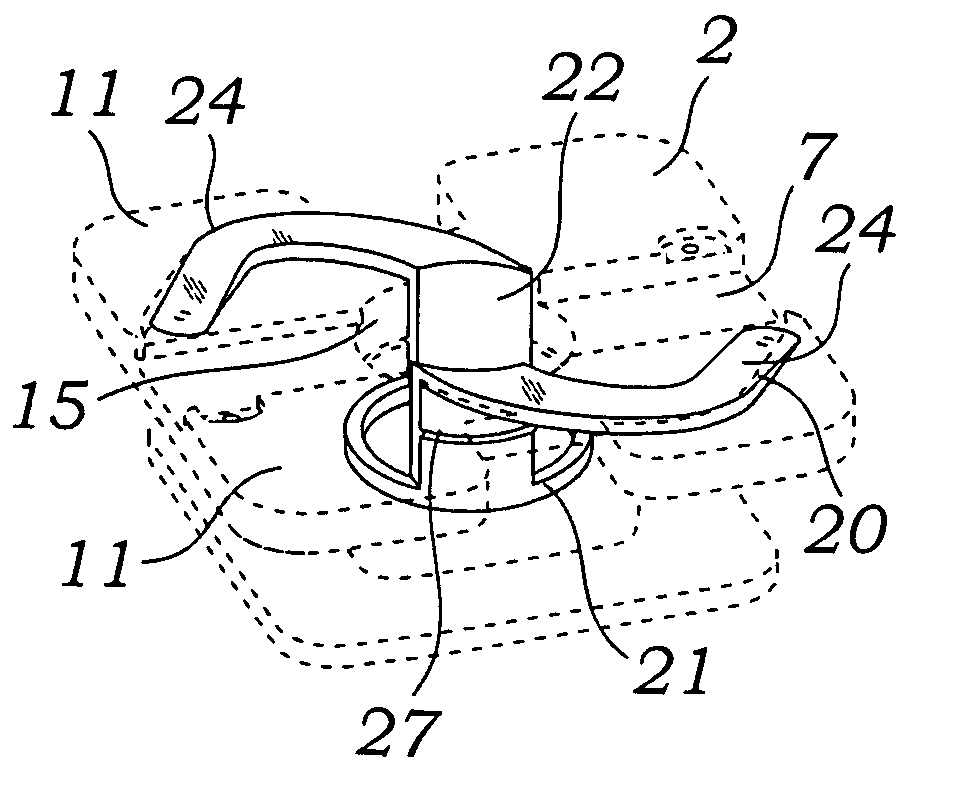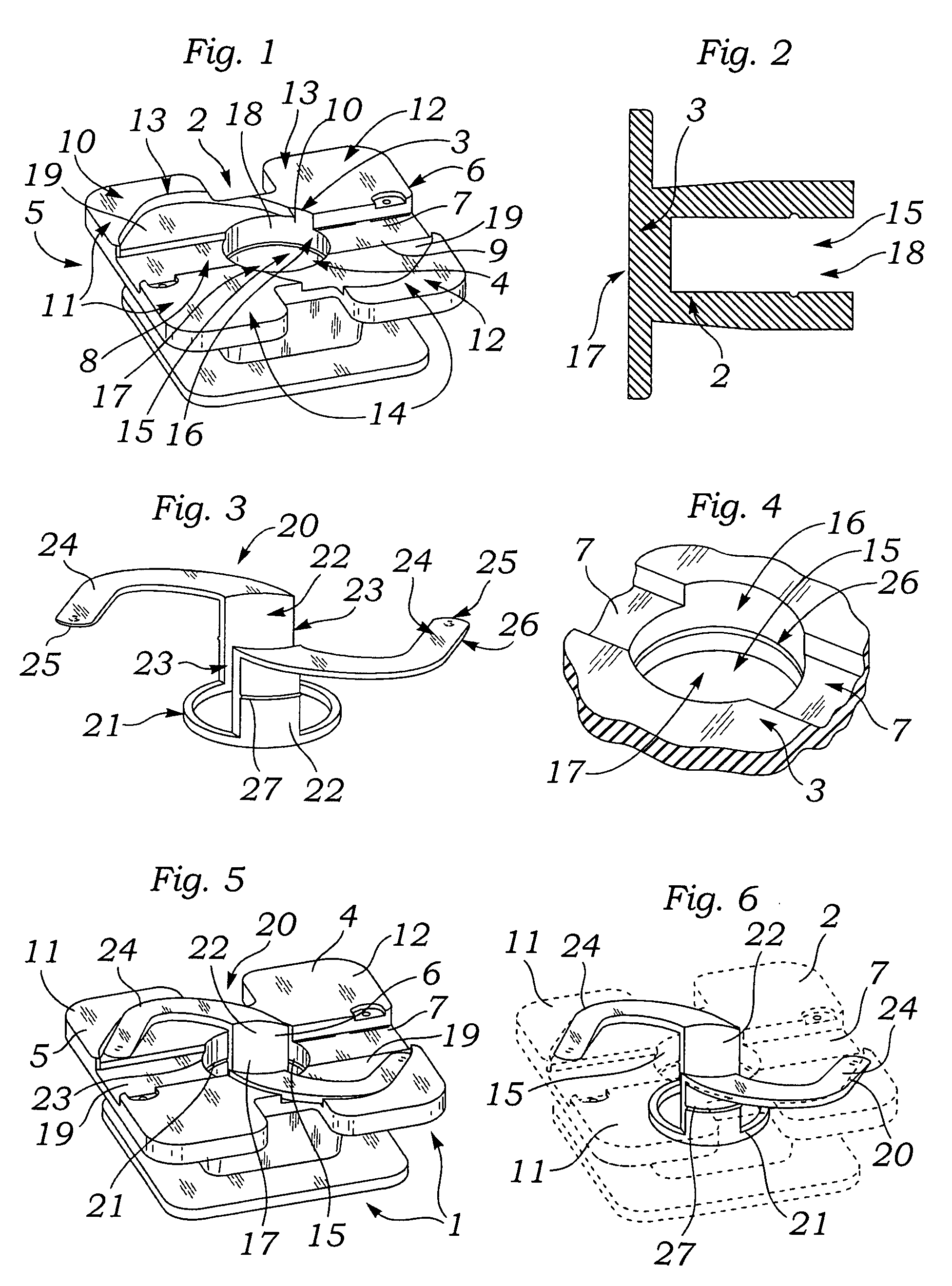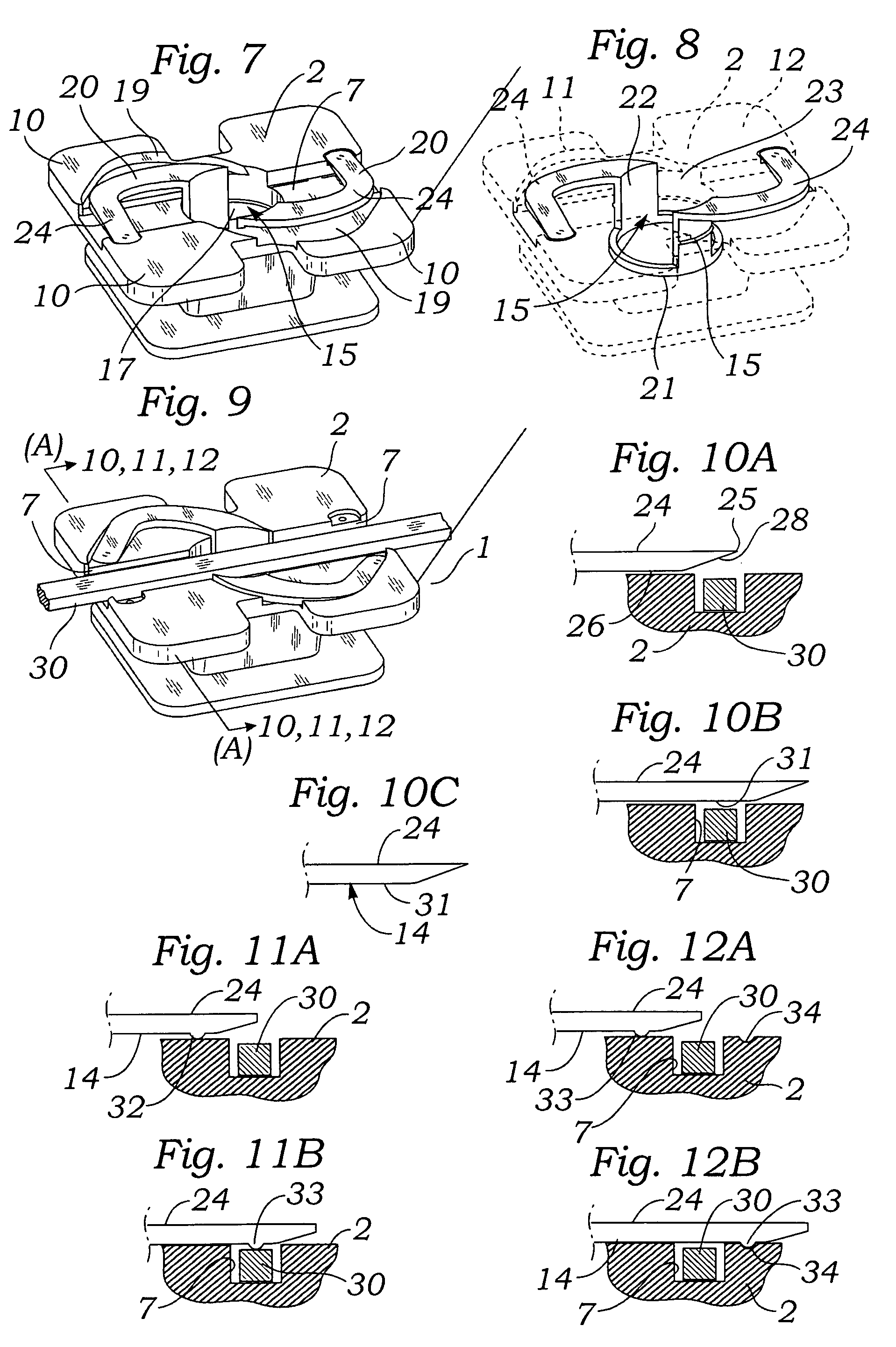Rotating clip orthodontic bracket
a technology of orthodontic brackets and rotating clips, which is applied in the field of locking orthodontic brackets, can solve the problems of increasing the size of the locking cover, the user cannot be certain as to the proper seating of the archwire, and the user's visual confirmation of the proper placement of the archwire, so as to reduce calculus build up and the effect of affecting the stability of the bracket, reducing the amount of calculus
- Summary
- Abstract
- Description
- Claims
- Application Information
AI Technical Summary
Benefits of technology
Problems solved by technology
Method used
Image
Examples
Embodiment Construction
[0042]The invention is comprised of a self-ligating orthodontic bracket assembly 1. FIG. 1 discloses a bracket body 2 with a back 3 and a front surface 4. The bracket body 2 has a left side 5 and right side 6. An archwire slot 7 extends from left 8 to right 9 on the front surface 3. Attached to the bracket body 2 are tie wings 10 positioned left 11 and right 12. The tie wings 10 extend outwardly from the top 13 and bottom14. The front surface 4 of the bracket body 2 contains a cylindrical recess 15 with a circular wall 16 extending from a circular front 17 towards the body 2 back 3 ending in a circular floor. The tie wings 10 fit within front surface 4 recesses 19 in order to make the tie wings 10 flush with the bracket front surface 4. FIG. 2 shows the bracket body 2 in cross section. FIG. 3 discloses a rotating clip 20 which is attached into the cylindrical recess 15 of FIGS. 1 and 2. The rotating clip 20 has a circular base 21 with attached opposing columns 22 extending at right ...
PUM
 Login to View More
Login to View More Abstract
Description
Claims
Application Information
 Login to View More
Login to View More - R&D
- Intellectual Property
- Life Sciences
- Materials
- Tech Scout
- Unparalleled Data Quality
- Higher Quality Content
- 60% Fewer Hallucinations
Browse by: Latest US Patents, China's latest patents, Technical Efficacy Thesaurus, Application Domain, Technology Topic, Popular Technical Reports.
© 2025 PatSnap. All rights reserved.Legal|Privacy policy|Modern Slavery Act Transparency Statement|Sitemap|About US| Contact US: help@patsnap.com



